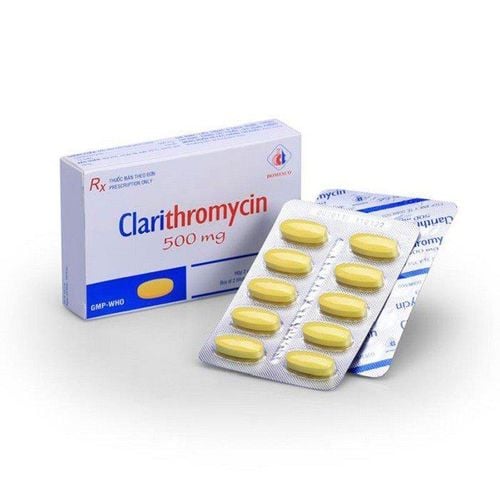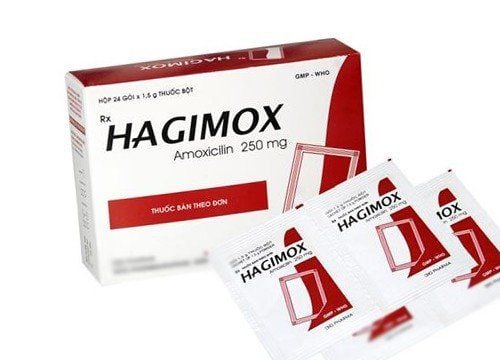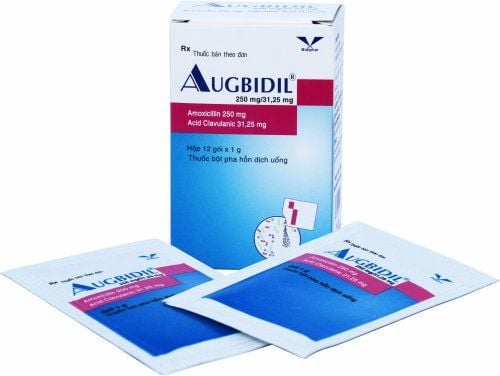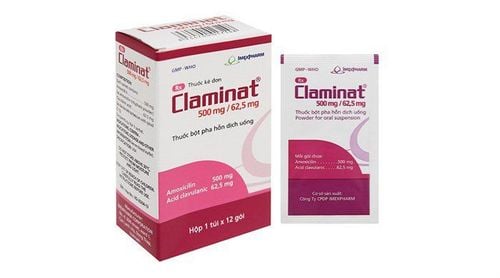This is an automatically translated article.
Cefazolin VCP is a drug commonly prescribed for bacterial infections (joints, soft tissues, respiratory tract...). However, many people still do not really understand the use of Cefazolin VCP as well as its composition, dosage, usage and important notes when using it.
1. What is Cefazolin VCP?
Cefazolin VCP is a drug whose main ingredient is Cefazolin. The drug is prepared in the form of a powder for injection.Packing: Packed in a box of 1 vial, box of 10 vials, box of 1 vial with 1 tube of 5ml distilled water for injection.
2. Uses of Cefazolin VCP
Cefazolin VCP is indicated in the treatment of bacterial infections, including:
Skin and soft tissue infections. Respiratory tract infections. Bone and joint infections. Some cases had sepsis and endocarditis. In some cases, infections of the genitourinary tract, urinary tract and bile ducts were reported. Used in surgical prophylaxis, to reduce the risk of postoperative infection.
3. Dosage and how to use Cefazolin VCP
3.1. Dosage Adults: Take 0.5 - 1g every 6-12 hours, the maximum dose is 6g/day. Newborns under 1 month of age: 20 mg/kg every 8 to 12 hours. Children over 1 month old: Take 25 - 50 mg/kg/day, divided into 3-4 times, if severe infections can increase the inter-dose to a maximum of 100mg/kg/day, divided into 4 oral doses. In case of infection prevention in surgery: 1g dose before surgery, 0.5 - 1 hour before. In case of prolonged surgery: During surgery, inject dose of 0.5 - 1g, after surgery, inject dose of 0.5 - 1g every 6 - 8 hours, continuously for 24 hours or 5 days for some cases. Open heart surgery, orthopedic transplant In case of renal failure: Need to reduce dose, if creatinine clearance is above 55ml/min, the usual dose can be used.If creatinine clearance is 35-54ml/min If the creatinine clearance is between 11 and 34 ml/min, use half the usual dose with an interval of about 12 hours. If creatinine clearance is less than 10ml/min, use 1/2 of the usual dose with a frequency of 18-24 hours. 3.2 Intramuscular administration: Cefazolin is dissolved in a solvent for intramuscular injection such as: Sodium chloride injection 0.9% , lidocaine for injection 5%, dextrose for injection 5%, distilled water for injection Intravenous: 1g of cefazolin should be dissolved in at least 5-10ml of distilled water for injection, administer slowly within 3-5 minutes. circuit : 1g of cefazolin should be dissolved in 50-100ml of distilled water for injection or use one of the following infusion solutions: Glucose 5% or 10% injection, 5% dextrose injection with added sodium chloride injection 0.2% or 0. 45% or 0.9%, 0.9% NaCl injection, 10% or 5% glucose in distilled water for injection, 5% dextrose in sodium lactate injection, 10% or 5% inverse equivalent in distilled water to injection, sodium lactate injection.
4. Notes when using Cefazolin VCP
4.1. Contraindications The drug is contraindicated in patients with a history of allergy to Cephalosporins and penicillin group of antibiotics.
4.2. Side effects Allergic manifestations: Causes skin redness, itching, rash, measles-like rash, urticaria. Fever reaction. Gastrointestinal manifestations: Abdominal pain, loss of appetite, nausea, vomiting, diarrhea, oral candidiasis. Thrombocytopenia or, rarely, thrombocytopenia. Reduces leukocytes, granulocytes, neutrophils. Taking the drug in high doses can lead to encephalopathy, which is caused by metabolic disorders (abnormal movements, coma or convulsions, impaired consciousness), especially in patients with kidney failure. Manifestations of local intolerance: When injecting muscle, there is pain, discomfort at the injection site, even fever. When intravenous infusion has phlebitis or thrombophlebitis, the cause is the insertion of a catheter. 4.3. Drug interactions When used in combination with probenecid, there is a risk of reducing the ability of cephalosporins to be eliminated through the renal tubules, thereby increasing and prolonging the concentration of cephalosporins in the blood. Combined use of cephalosporins with colistin - the polymyxin antibiotic will increase the risk of kidney damage. 4.4. Precautions for use Cefazolin allergy has been reported in patients who are not allergic to penicillin. There are cases of toxic epidermal necrolysis and the development of systemic pustular rash. It is estimated that the incidence of clinical cross-allergy between Cephalosporins and penicillins is 1 to 2%. Most all cephalosporins carry a risk of causing neutropenic reactions to agranulocytosis. It is well documented that interference with the synthesis of vitamin K-dependent coagulation factors is impaired. Therefore, it is important to monitor bleeding time in high-risk patients. Conditions such as liver dysfunction, renal failure, a history of gastrointestinal disease, and nutritional deficiencies all increase the risk of bleeding in patients treated with cefazolin. Cases of neurotoxicity with cefazolin have been reported with intraventricular and systemic administration. In case of overdose and the patient has a seizure, the drug should be stopped immediately, anticonvulsant treatment if clinically indicated. At the same time, protect the patient's respiratory tract, promptly support ventilation and infusion. Careful monitoring and maintenance of vital signs, such as serum electrolytes or blood gas concentrations, should be carefully monitored and maintained within allowable levels. Breast-feeding is not recommended during drug therapy, although the harmlessness of cephalosporins has not been established in pregnant women, animal studies have not demonstrated abortive or teratogenic effects. pregnant. Above are the uses of Cefazolin VCP and important information that we need to know. In order to ensure safety and maximize the effectiveness of the drug, patients should use it exactly as prescribed and guided by a specialist.
Please dial HOTLINE for more information or register for an appointment HERE. Download MyVinmec app to make appointments faster and to manage your bookings easily.













